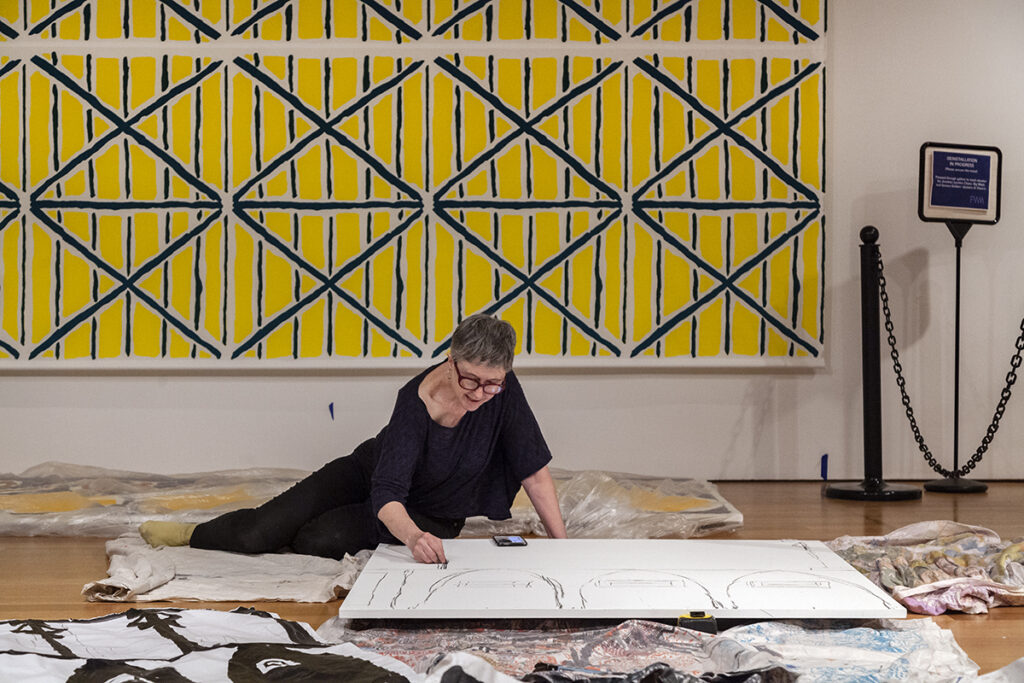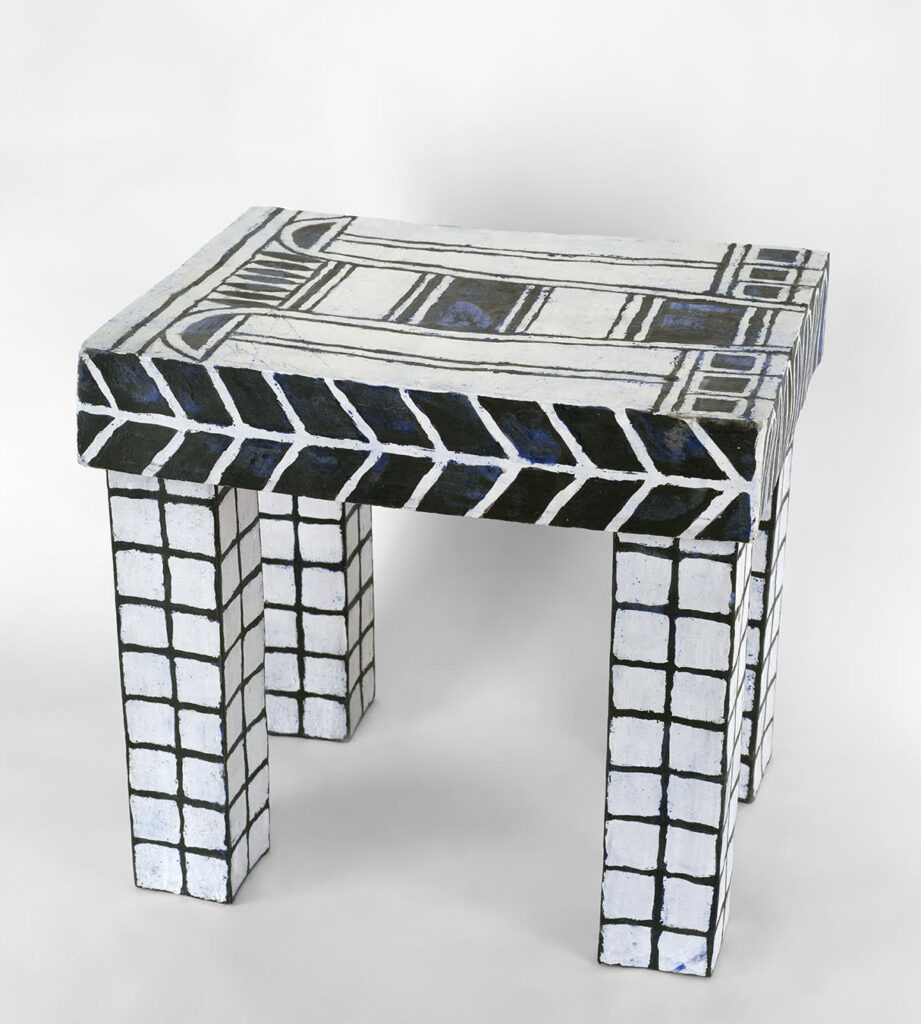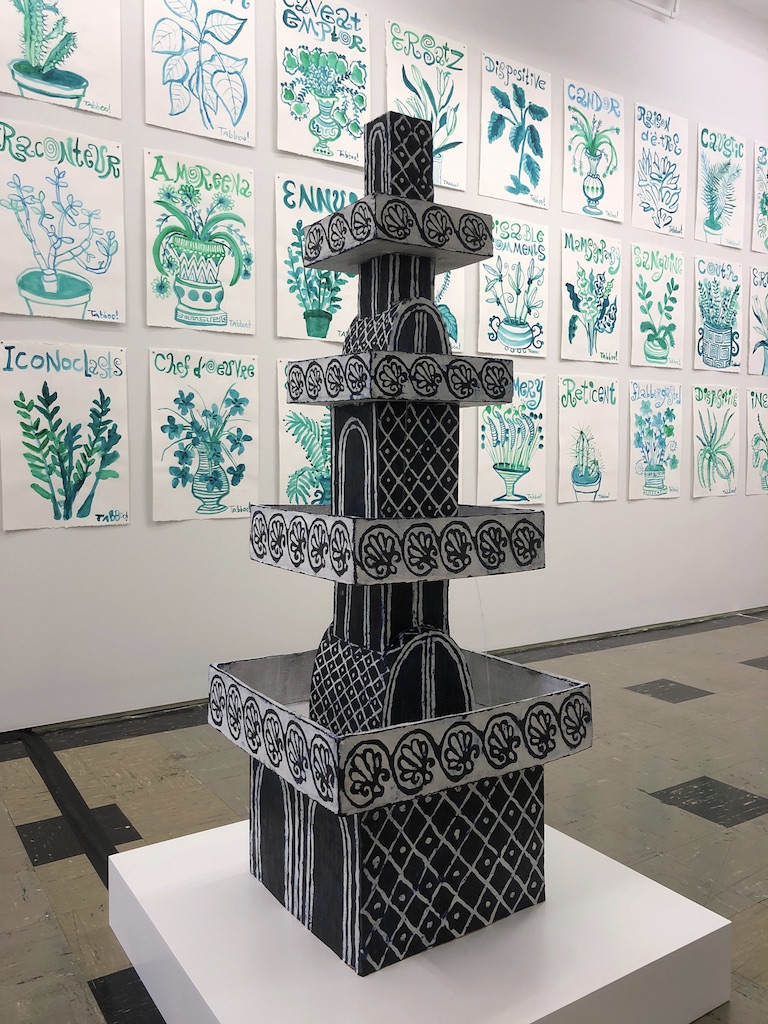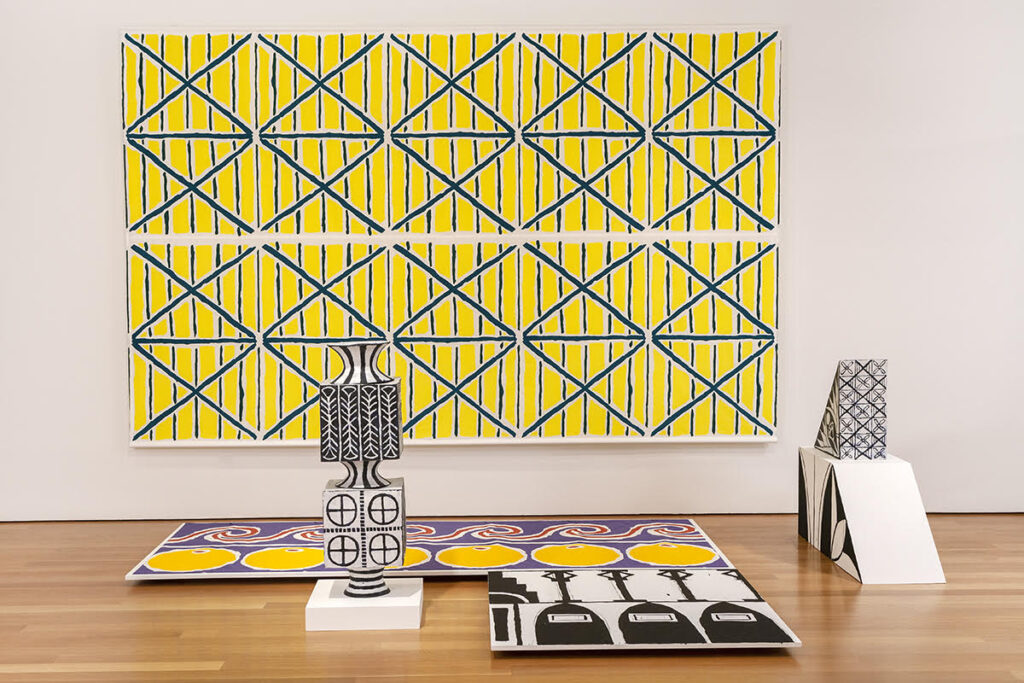April 20, 2021
Artist to watch
ELISABETH KLEY

NB: Could you share with us your story of how you got started working in ceramics? Who and what inspired you?
EK: My start in ceramics was serendipitous. My husband wanted to start making terracotta sculptures. We needed to learn how to use a kiln, and decided to take a class at our neighborhood pottery school. The class didn’t fit my husband’s schedule, so I took it on my own. I had recently been inspired by the beautiful historical ceramics in the Musée de Sèvres, just outside Paris. Light poured into the galleries and the pieces all seemed to glow. I really liked the way the artists painted on the ceramics — the touch was so effortless and fresh. I thought perhaps I would make dishes to use, but I never did. Instead, I made small sculptures and vessels and my work went on from there.
I think a lot about world culture and art history. I am inspired by ceramics and textiles from Central Asia, Turkey, Syria and Japan. I also find inspiration in textiles from Samoa, Roman frescoes and mosaics; Ancient Greek and Egyptian art; Coptic, Indian, and Wiener Werkstätte fabric design; and Ballets Russes sets and costumes. Artists I look at are Matisse, [Aubrey] Beardsley, Annie Albers, Leon Bakst, Natalia Goncharova, Kees von Dongen and Beatrice Wood. Also, for more contemporary art, I admire Nick Mauss, Paul P., Marina Adams, Marc-Camille Chaimowicz, Chris Ofili, Etal Adnan, Kai Althoff and Betty Woodman.
NB: Can you tell us a bit about your studio process, and provide us with some insight as to how you develop the patterns and marks in your ceramics?
EK: I like to travel and go to museums. I have my iPhone with me, and I take hundreds of pictures. When I get back to the studio, I go through the images and make drawings in pencil and ink of whatever catches my eye — mostly abstract shapes and small details I find in pottery and textiles. I also use drawing to figure out shapes for the ceramics.
I make most of the ceramics out of slabs. I put the clay through a slab roller, cut the slabs to size and assemble them into three dimensional shapes.
Most of the surfaces are flat, so once they have been fired (to make them strong), I cut paper shapes the same size of each flat surface of the piece, paint different designs on the paper and tape it on the sculptures, as though I am dressing paper dolls. I keep changing the drawings until I come up with what I want.
After that, I paint the piece with white underglaze and I draw the design once, followed by a second coat of white underglaze, another better drawing, and a third coat of underglaze. Next, I paint wax over the places that will stay white and when the wax dries I put cobalt blue stain and black underglaze on the unwaxed areas. The pieces go back into the kiln; the wax fires off, and the design is set. Then I glaze them and fire on the glaze.

NB: How long does your process typically take?
EK: It took around eight months to make and decorate the eight sculptures included in the show at The Fabric Workshop and Museum. It takes a day or two to roll the slabs for each piece, another day or two to assemble the slabs, and then the sculptures have to dry for a few weeks before the first firing. Finding the right painting for each piece takes as long as it has to. The fabric took several months too, as I did a lot of different watercolor drawings before choosing the three final designs.
NB: Wow, that is fantastic! I’d love to hear more about Fountain with Arches and Nautilus Border (2019). How long did it take you to make that work? Can you tell us a little bit about how the work came to be? And — congratulations, it was acquired for the Whitney, which is very exciting! I remember seeing it in a gallery, and being blown away. I am thrilled it landed at such an important institution.
EK: I have known the artist Tabboo! for a long time and liked his paintings. I went on a trip to Rome and Naples with my friend Jacob Robichaux (who founded the gallery Gordon Robichaux with Sam Gordon, and represents Tabboo!). We went to the Naples Archaeological Museum, which is filled with the Roman frescoes removed from Pompeii. I have done several site-specific wall paintings for exhibitions, and Jacob and I started wondering what Tabboo! would do if he painted a mural. We dreamt up a show that would have a room with Tabboo!’s colorful wall painting on one side and a room with my black and white wall painting on the other side. I made the two fountains for the longer, rectangular space between the rooms, in front of a wall that was covered with Tabboo!’s blue/green drawings of plants with words. It was our version of a Roman garden. Jacob helped me construct styrofoam models to get the proportions right for the fountains. Then I made them, which took a few months.

NB: Who did the plumbing work?
EK: Jacob! I sent away for the pumps, and the plumbing is quite simple. But since ceramic shapes can change during firing, it was a challenge to get everything level so the water could flow equally on each side. Jacob was patient enough to figure it out, using wax and coins to adjust.
NB: Was there ever a time when you were making your fountains that, due to inconsistency in ceramic, you had to start again?
EK: Yes. The big basins at the bottom were the hardest. I tried glazing the underside of one, but when I took it out of the kiln (it had been fired raised on stilts at the corners) it had sagged and bent; it wouldn’t sit level. I had to re-do that piece and leave the bottom unglazed.
NB: Why don’t you tell us a little about your exhibition at The Fabric Workshop and Museum in Philadelphia, Minutes of Sand? And what the title means.
EK: I have the catalog from a really wonderful Alfred Jarry show at the Morgan Library last year (which I actually missed because of the pandemic). I love Alfred Jarry’s woodcuts. The title is taken from his first published book, Les Minutes de Sable Memorial (Memorial Minutes of Black Sand). I had been thinking that I would maybe use some of his designs for my ceramics, but I wound up sticking with Egypt as my source because there was so much more to work with.
The show came about because the curator, Karen Patterson, had seen my work at the Independent Art Fair in 2018. I had done a solo booth with my gallery Canada, including ceramics, paintings on cloth, drawings and wall painting. When she started working at Fabric Workshop, she invited me to come and make colored silkscreened fabric and exhibit it with my ceramics.
I came up with a lot of ideas for the installation. I wanted the color to move through the exhibition. The fabric was silkscreened with three different designs, so there are three wall hangings, and three lengths of fabric placed on low wooden platforms, like rugs. There are also pedestals that I designed, in special shapes. When I arrived in Philadelphia for the installation, I did black paintings on the blank areas of the floor platforms and also on the pedestals. There is also a screen, with fabric on one side and black painting on the reverse.
NB: A lot of your work is in black and white, where did that come from?
EK: I always used color, but I also made black and white ink studies for my ceramic designs. In 2014, I decided to try making the ceramics black and white, and got so interested that I’ve been doing it ever since. There is endless variety as I change the proportions of black to white. I’m also fascinated by reversing positive and negative space. For a while, I made flasks that had the same design on both sides, one black and white and the other white on black.
NB: It’s a really big hit and has become your signature style!
EK: Yes!
NB: Is there anything coming up that you’re able to talk about, in terms of shows or new bodies of work? Could you share with us a glimpse of what’s to come?
EK: I haven’t had a show at Canada since 2016, so I am working towards a show there in the not too distant future. I’m hoping to come up with new shapes for the ceramic sculptures, and another complex installation.
NB: Congratulations on your show opening in Philadelphia! I absolutely adore your work and I am so excited to be able to share your story and share your works.


